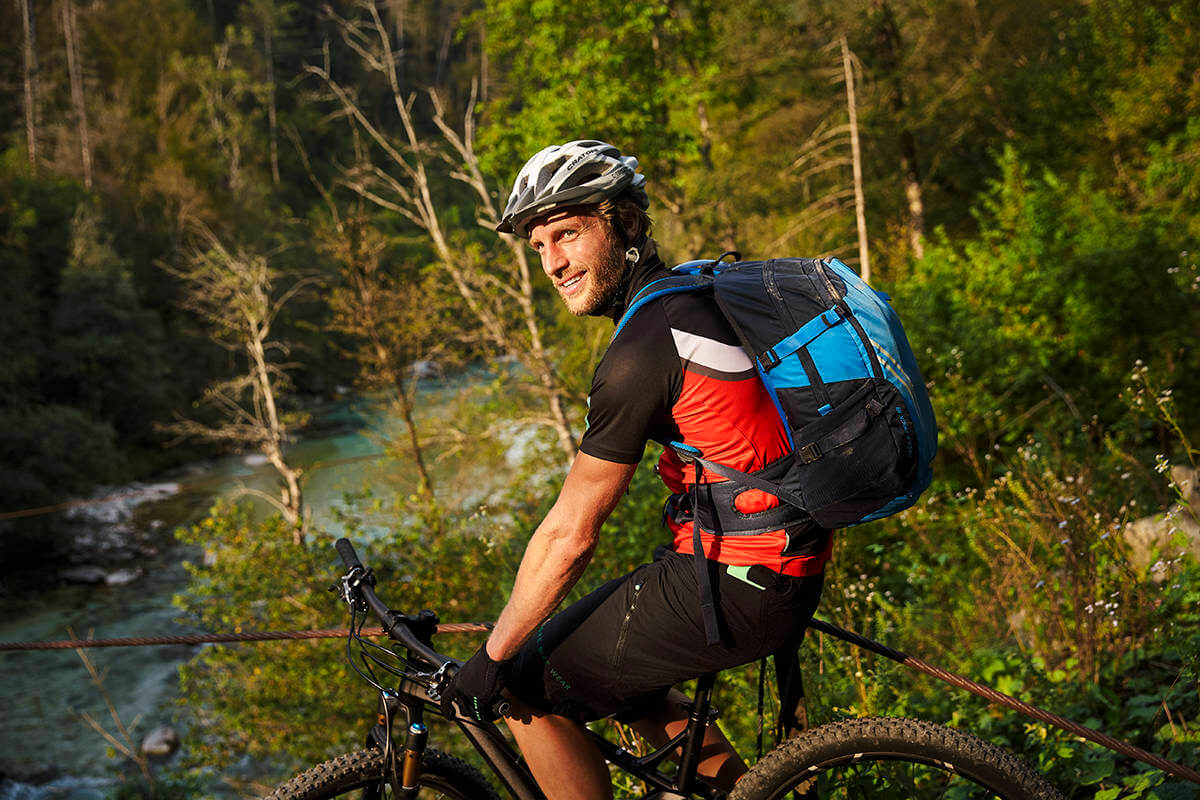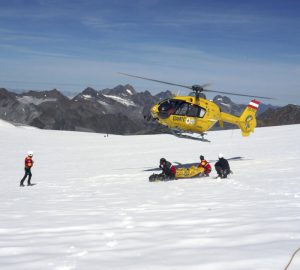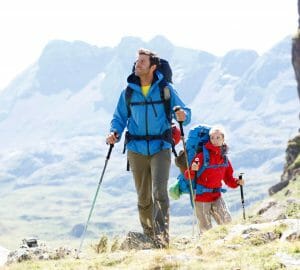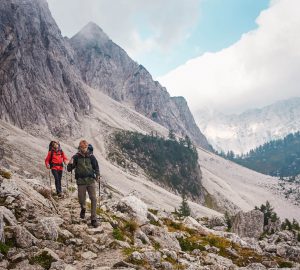You got the bike, the weather’s just perfect – let’s go! Out and about with your mountain bike, far away from streets and off the beaten track, mountain biking is great fun but also a real challenge. What’s important, though, when it comes to riding mountain bikes? Tatonka compiled some tips and tricks regarding driving techniques.
In order for you to enjoy your bike and your bike ride, always keep two things in mind: technical training and fundamental skills. Knowing how to handle your bike properly is essential. You need to keep your bike in balance and always be able to re-adjust the focal point. Also, keep in mind that your eye should always be bound forward. This way, you are focussed on where you’re going, and you can handle possible obstacles better.
Basic Position
Without the basic position, nothing else will work: It’s the base for all your riding. Without a solid basic position, your technique will never be as smooth as it could be. Even more important for you to master it.
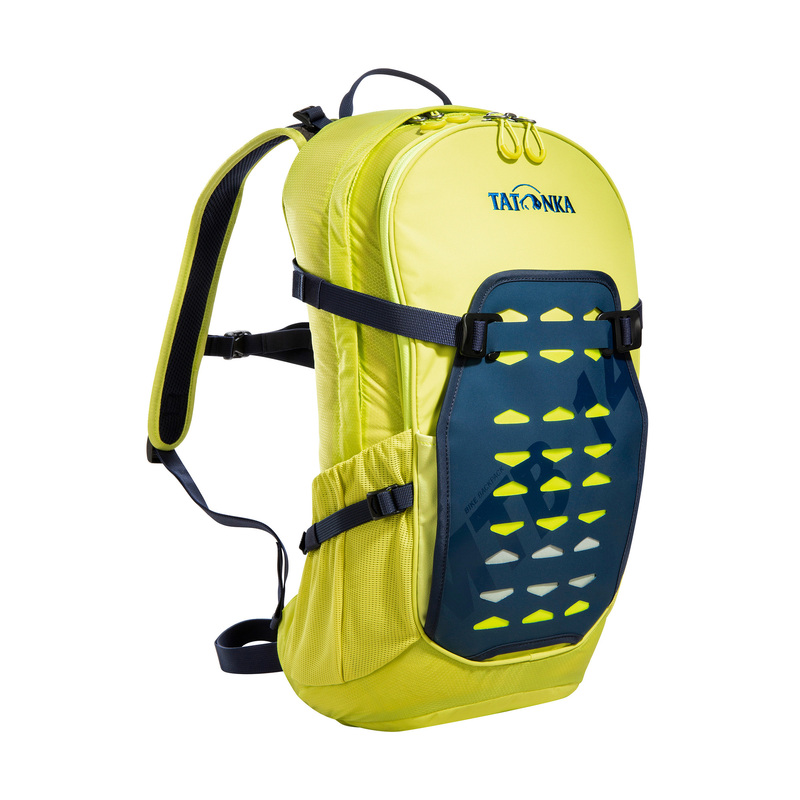
The perfect companion for your next bike trip
Our Bike Backpack MTB with 14 liters volume, large main compartment, helmet holder and integrated rain cover has just the right size for a day trip.
Thanks to its Frame Vent carrying system with spacer mesh, it offers optimal back ventilation.
How it works: Drive at medium speed on an even surface, stand up and distribute your body weight equally on the pedals. Your knees should be slightly bent, just like your arms, so that the pressure on your wrist doesn’t get too intense. Your elbows should point outwards and two fingers should lie on the brake handles. Now, try to slowly bring your bike to a standstill by activating the rear-wheel brake. This is how you can train your balance. Advanced bikers can try and take one hand off the handle. Alternatively, you can try keeping your balance on a beam or a long board or break through an obstacle by lifting the front wheel. Advanced bikers might want to use euro-pallets, which can be piled up at will.
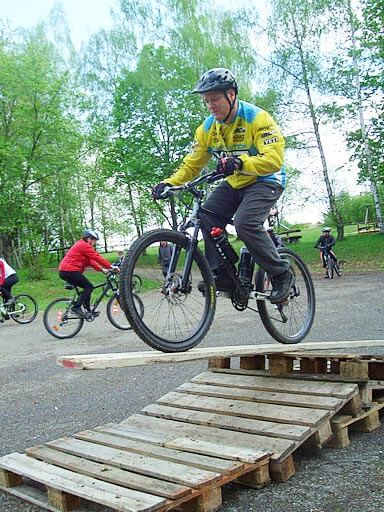
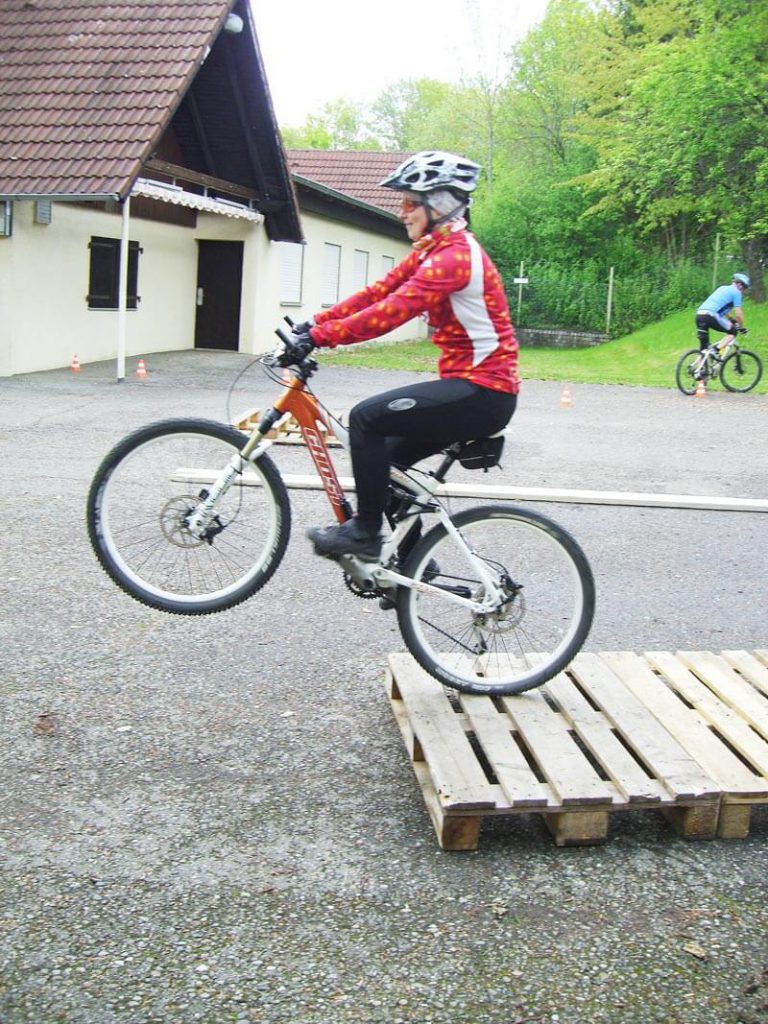
Finding your focal point is the most essential thing for a mountain biker – a specific training is recommended.
Slalom
Against common belief, it’s harder to drive slowly than fast. Speed stabilises your balance, but only when slowing down you’ll find out how much control you have over your bike. To improve your steering, drive very slowly around some cones. You should especially concentrate on the change of direction: While your body and your bike are still pointing into one direction, your eyes already must be looking in the other direction. This way, your body’s centre of gravity shifts, and your bike automatically drives in the new direction. When you now set your upper body upright and take back the shoulder that points towards the bend, you will support this effect. By putting the cones closer together, it gets harder to ride a smooth line – an ideal training.

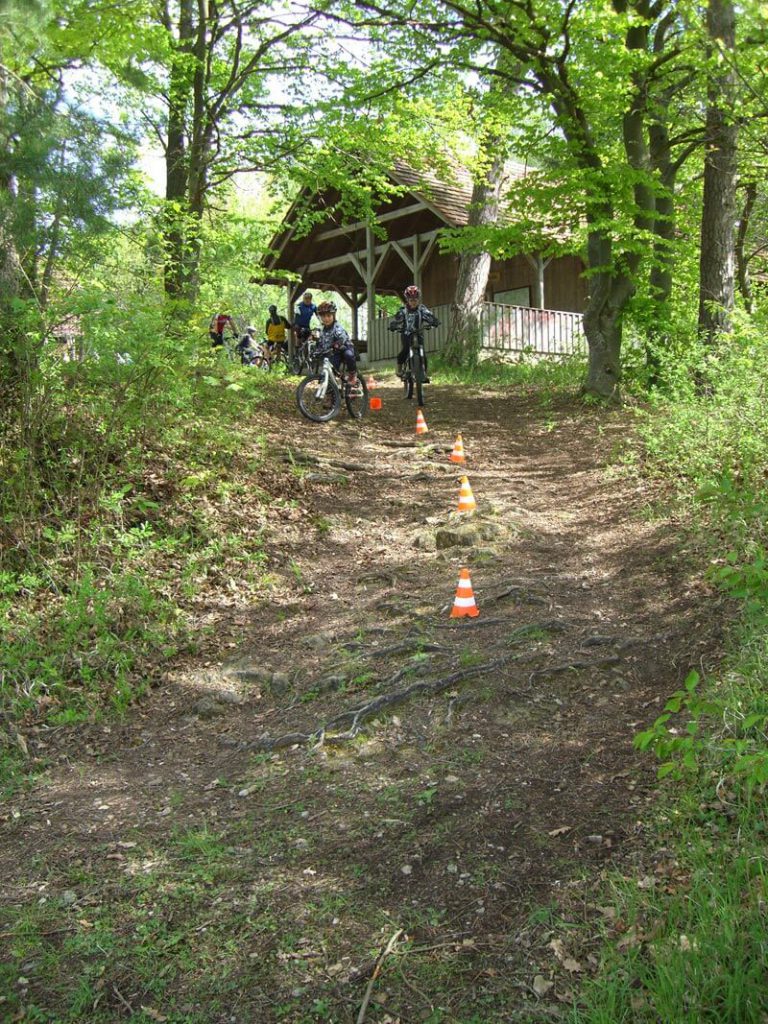
Braking
When braking, it’s crucial that you can handle both your front and rear brake. To practise this, first get into the basic position and then drive downwards. Then apply the front and rear brake at the same time. To avoid your body sliding forwards, you’ll have to counteract by bending your knees and arms to level your body over the middle of your bike. Rule of thumb: The more weight rests on the tyres, the less it can slide away. MTB beginners often let their weight shift too far backwards when going downhill on a steep trail. This way, the front wheel loses traction and a fall is inevitable. That’s why your body’s centre of gravity plays an important role: Always shift it in a way that your weight is distributed evenly, and your center of gravity remains in the middle.
Also interesting: Checklist mountain bike – Well equipped for MTB tours
You can practise how to coordinate your front brake in detail like this: Push your bike on an underground that is not too slippery and try to get the rear wheel up in the air by applying your front brake. Keep the bike going on its front wheel while keeping the rear wheel steadily in the air.
Another exercise is braking and avoiding obstacles. You drive towards the obstacle, brake for a standstill and then, without your feet touching the ground, you go around the obstacle.
This article was published in July 2014 and revised in May 2018.




